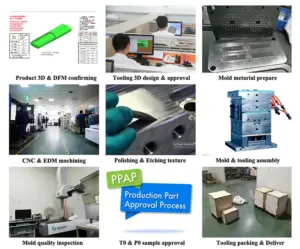The Evolution and Significance of Mold Making
Mold making, a craft that dates back to the Bronze Age, is integral to modern manufacturing. This process involves designing and creating molds that act as templates for producing identical copies of various objects. These molds, which must be crafted with precision, are used in manufacturing a range of products from metals and plastics to ceramics and composites. The ability of mold making to produce high volumes of uniform parts with intricate details highlights its importance in the manufacturing industry.
Historical Journey of Mold Making
The history of mold making spans from ancient civilizations to modern times. Originating in the Bronze Age, early mold making was used to create culturally significant weapons, jewelry, and artifacts. Civilizations like the Egyptians and Sumerians advanced the craft, using molds for bricks, pottery, and metal objects. Techniques evolved from rudimentary stone and clay molds to more sophisticated methods like sand casting and lost-wax casting, prevalent during the Middle Ages.
The Industrial Revolution marked a transformative era for mold making, introducing mechanization and paving the way for modern techniques like injection molding and CNC machining. Today, the advent of 3D printing has further revolutionized mold making, allowing for rapid prototyping and reducing the time and cost associated with traditional methods. This evolution underscores the role of mold making in human progress and innovation.
The Mold Making Process

Mold making involves creating a cavity that mirrors the desired object’s shape. This negative space then produces multiple copies of the object. The process, requiring meticulous planning and execution, ensures high-quality and precise final products. The main stages of mold making include:
Design and Conceptualization: Engineers and designers create a 3D model of the part to be produced, serving as the mold’s blueprint. This model incorporates features like cavities, cores, and ejector systems, considering thermal and mechanical stresses.
Material Selection: Choosing the appropriate material for the mold is critical. Factors like the mold’s intended use, the final product’s material, and production volume influence this decision. Common materials include steel for high-volume production, aluminum for quick heat dissipation, and silicone or rubber for flexible parts.
Machining and Fabrication: The physical creation of the mold involves techniques such as CNC machining, EDM (Electrical Discharge Machining), and 3D printing. Precision in this step ensures the mold accurately reflects the design specifications.
Surface Finishing and Polishing: Post-machining, the mold undergoes surface finishing to enhance quality and functionality. Polishing is crucial for achieving the desired surface finish, especially for injection molding.
Assembly and Testing: The mold components are assembled, ensuring precision for correct and safe operation. The assembled mold is tested to verify proper filling, cooling, and part ejection.
Trial Runs and Adjustments: Before full-scale production, trial runs identify potential issues, allowing for adjustments in temperatures, pressures, and cycle times to ensure optimal performance.
Final Inspection and Approval: The mold and trial parts undergo thorough inspection to meet all specifications and quality standards. Upon passing this inspection, the mold is approved for production.
Essential Equipment and Tools for Mold Making
Successful mold making requires specific machinery and tools:
CNC Milling Machines: Crucial for precision carving, drilling, and shaping of metal blocks.
EDM Machines: Essential for intricate details and precise dimensions, especially in
hard metals.
3D Printers: Revolutionize prototype mold making by directly fabricating mold components from digital models.
Lathe Machines: Used for producing symmetrical mold components, cutting, sanding, drilling, and deforming materials.
Grinding Machines: Provide finishing touches, ensuring smooth surfaces and precise dimensions.
CAD/CAM Software: Allows for precise design and programming of machining operations.
Tool and Die Making Equipment: Includes hand tools and die sets for cutting, shaping, and finishing molds.
Mold Assembly Tools: Clamps, presses, and screws ensure accurate assembly of mold components.
Heat Treatment and Tempering Equipment: Increase the strength and durability of metal molds.
Polishing and Finishing Tools: Achieve the perfect surface finish, ranging from manual tools to automated systems.
Inspection and Measurement Tools: Ensure precision with tools like micrometers, calipers, and coordinate measuring machines (CMM).
Safety Equipment: Includes protective gear such as gloves, goggles, and respirators to protect from machining, chemicals, and heat.
Mold making’s evolution from ancient to modern times underscores its significance in manufacturing. The meticulous process and specialized equipment ensure the production of high-quality molds, vital for creating consistent and precise products across various industries.